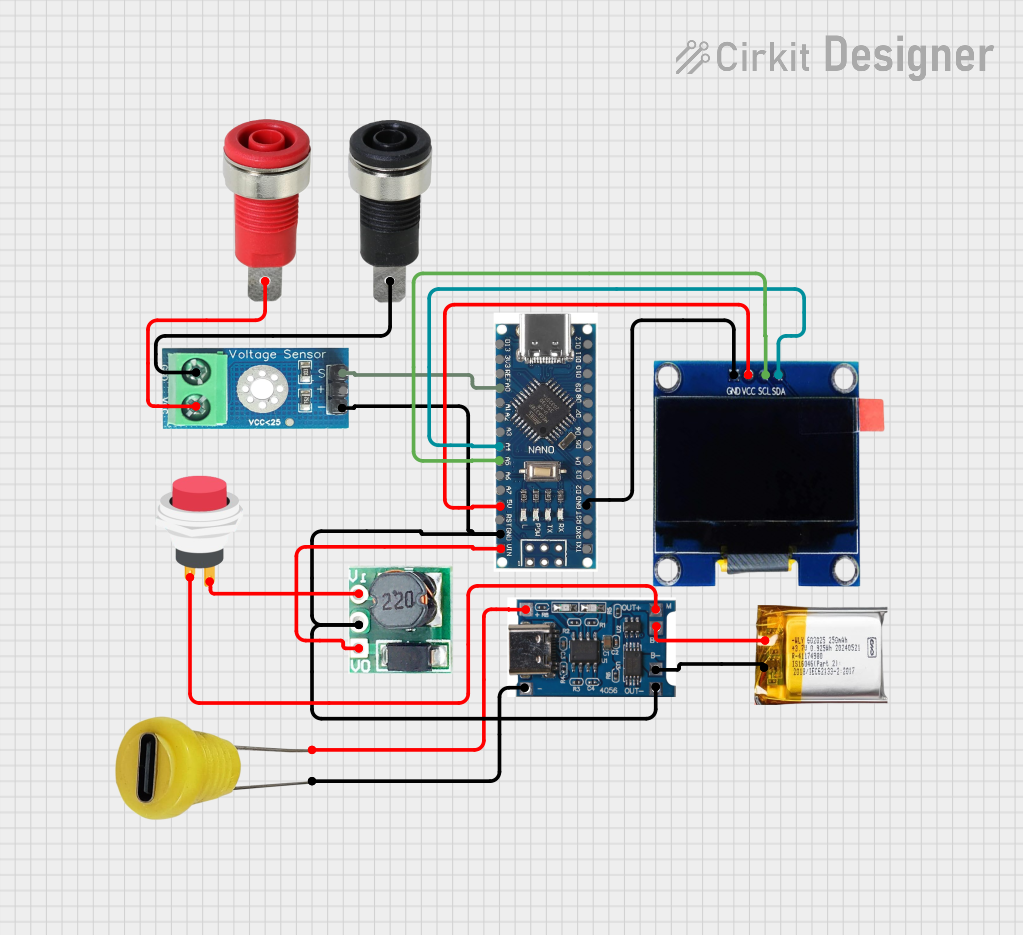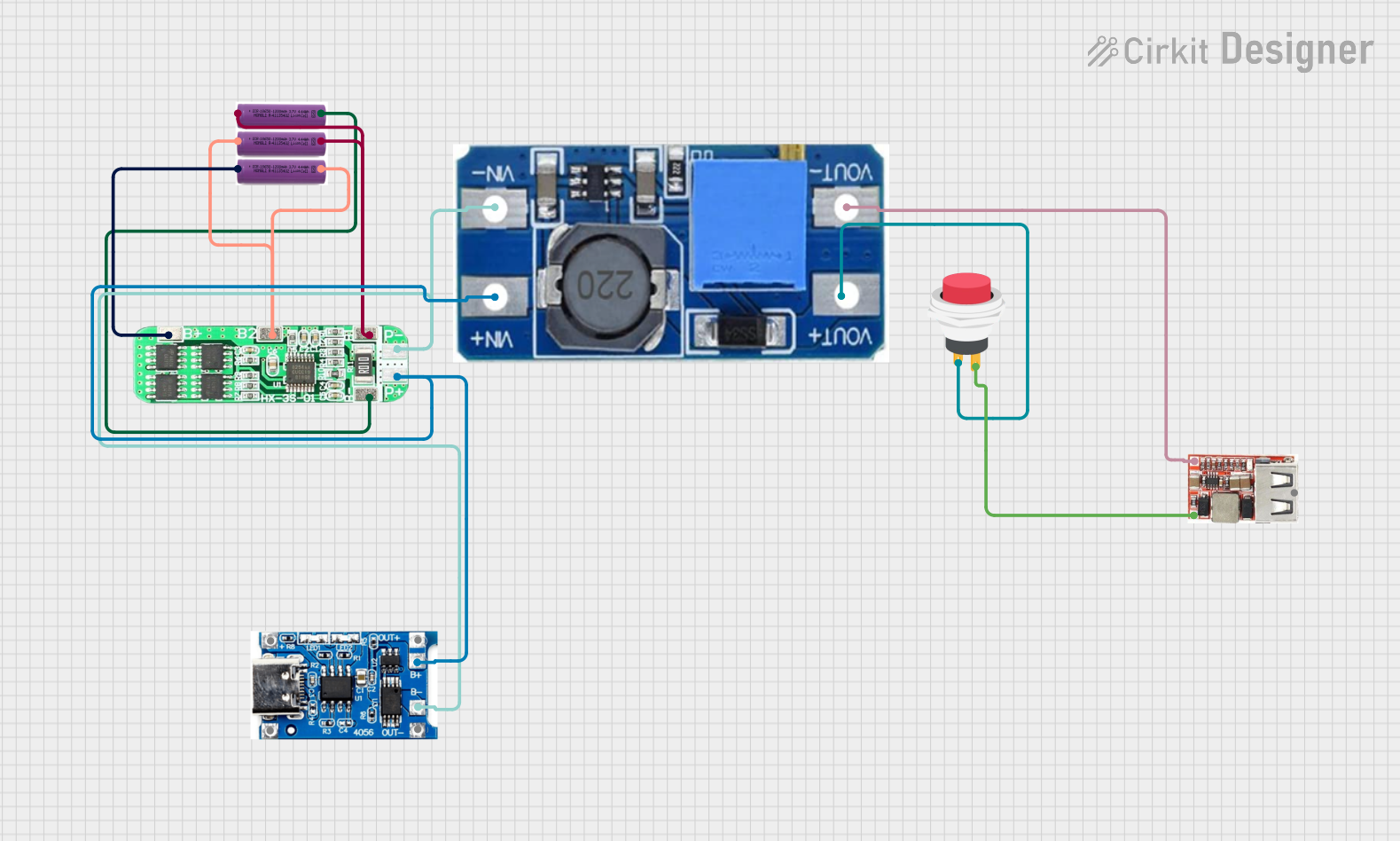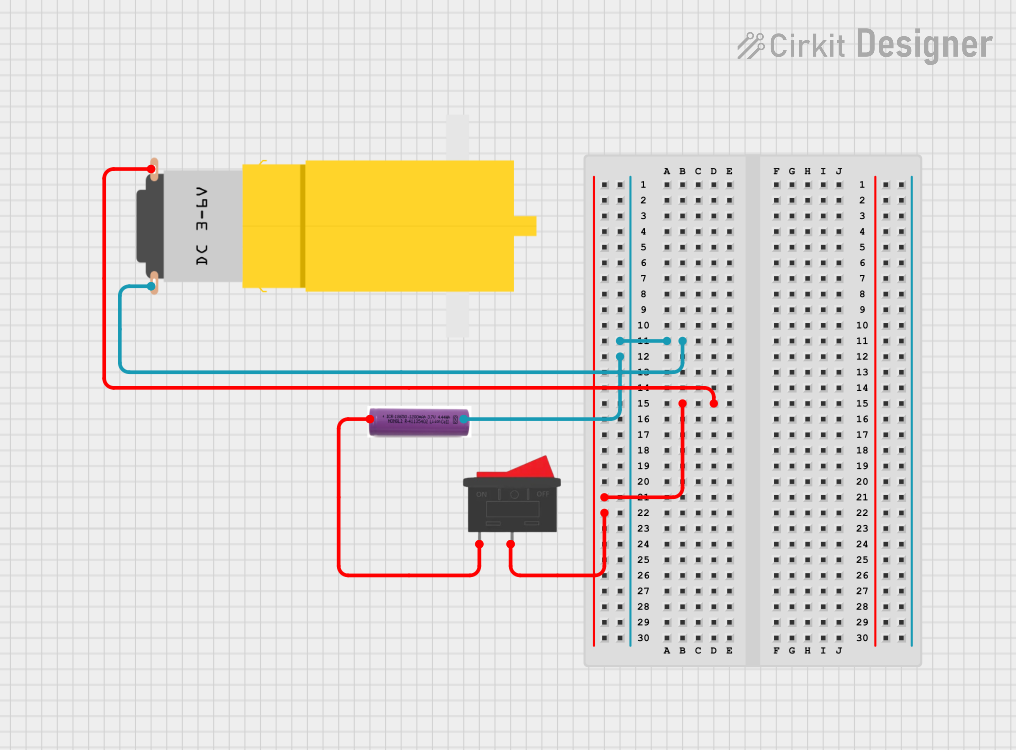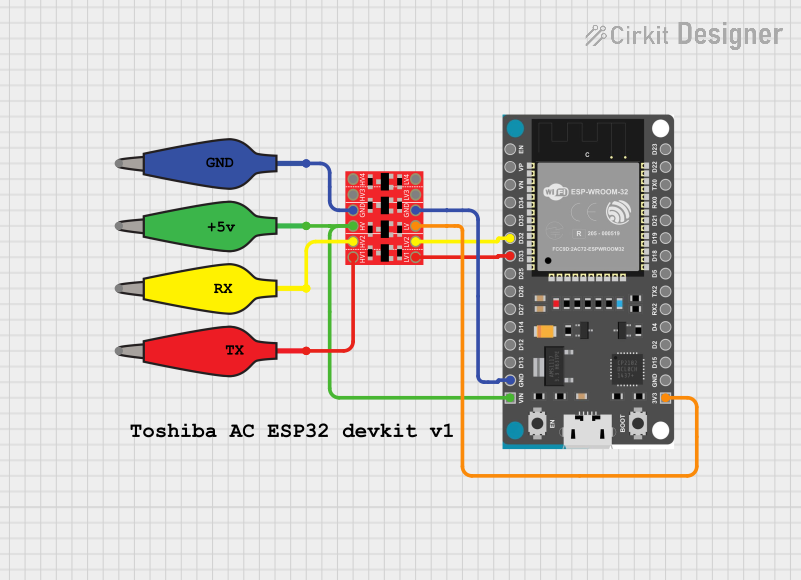
How to Use 3.3 V : Examples, Pinouts, and Specs

 Design with 3.3 V in Cirkit Designer
Design with 3.3 V in Cirkit DesignerIntroduction
The 3.3V voltage regulator is a crucial component in modern digital circuits, providing a stable 3.3 volts of electrical potential. This regulated voltage is essential for powering various low-voltage digital devices, including microcontrollers, sensors, and communication modules. The 3.3V voltage regulator ensures that these components receive a consistent voltage supply, which is critical for their reliable operation.
Explore Projects Built with 3.3 V

 Open Project in Cirkit Designer
Open Project in Cirkit Designer
 Open Project in Cirkit Designer
Open Project in Cirkit Designer
 Open Project in Cirkit Designer
Open Project in Cirkit Designer
 Open Project in Cirkit Designer
Open Project in Cirkit DesignerExplore Projects Built with 3.3 V

 Open Project in Cirkit Designer
Open Project in Cirkit Designer
 Open Project in Cirkit Designer
Open Project in Cirkit Designer
 Open Project in Cirkit Designer
Open Project in Cirkit Designer
 Open Project in Cirkit Designer
Open Project in Cirkit DesignerCommon Applications and Use Cases
- Microcontrollers: Many microcontrollers, such as the ESP8266 and ESP32, operate at 3.3V.
- Sensors: Various sensors, including temperature, humidity, and pressure sensors, require a 3.3V supply.
- Communication Modules: Wi-Fi, Bluetooth, and other RF modules often operate at 3.3V.
- Logic Level Conversion: Used to interface 5V systems with 3.3V components.
Technical Specifications
Key Technical Details
| Parameter | Value |
|---|---|
| Input Voltage | 4.5V to 12V |
| Output Voltage | 3.3V ± 0.1V |
| Output Current | Up to 1A |
| Dropout Voltage | 1.1V typical |
| Quiescent Current | 5mA typical |
| Operating Temperature | -40°C to +125°C |
Pin Configuration and Descriptions
| Pin Number | Pin Name | Description |
|---|---|---|
| 1 | VIN | Input voltage (4.5V to 12V) |
| 2 | GND | Ground |
| 3 | VOUT | Regulated 3.3V output |
Usage Instructions
How to Use the Component in a Circuit
- Connect the Input Voltage:
- Connect the VIN pin to a voltage source ranging from 4.5V to 12V.
- Ground Connection:
- Connect the GND pin to the ground of the circuit.
- Output Voltage:
- The VOUT pin will provide a stable 3.3V output.
Important Considerations and Best Practices
- Heat Dissipation: Ensure proper heat dissipation, especially when drawing higher currents. Use a heat sink if necessary.
- Input Capacitor: Place a 0.33µF capacitor close to the VIN pin to filter out any input noise.
- Output Capacitor: Place a 0.1µF capacitor close to the VOUT pin to stabilize the output voltage.
- Avoid Overloading: Do not exceed the maximum output current rating of 1A to prevent damage.
Example Circuit with Arduino UNO
/*
* Example code to demonstrate the use of a 3.3V voltage regulator
* with an Arduino UNO. This code reads an analog sensor powered
* by the 3.3V regulator and prints the value to the Serial Monitor.
*/
const int sensorPin = A0; // Analog pin connected to the sensor
void setup() {
Serial.begin(9600); // Initialize serial communication
}
void loop() {
int sensorValue = analogRead(sensorPin); // Read the sensor value
Serial.println(sensorValue); // Print the sensor value to Serial Monitor
delay(1000); // Wait for 1 second before the next reading
}
Troubleshooting and FAQs
Common Issues Users Might Face
No Output Voltage:
- Solution: Check the input voltage to ensure it is within the specified range (4.5V to 12V). Verify all connections, especially the ground connection.
Overheating:
- Solution: Ensure proper heat dissipation. Use a heat sink if necessary. Check if the current draw exceeds the maximum rating of 1A.
Unstable Output Voltage:
- Solution: Add the recommended input and output capacitors close to the regulator pins. Ensure the input voltage is stable and within the specified range.
FAQs
Q: Can I use the 3.3V regulator with a 5V input?
- A: Yes, the regulator can accept input voltages as low as 4.5V. However, ensure the input voltage is at least 1.1V higher than the output voltage for proper regulation.
Q: What happens if I exceed the maximum output current?
- A: Exceeding the maximum output current of 1A can cause the regulator to overheat and potentially fail. Always ensure the load current is within the specified limits.
Q: Do I need to use capacitors with the 3.3V regulator?
- A: Yes, using capacitors is recommended to filter out noise and stabilize the output voltage. A 0.33µF capacitor on the input and a 0.1µF capacitor on the output are typically sufficient.
This documentation provides a comprehensive guide to understanding, using, and troubleshooting the 3.3V voltage regulator. Whether you are a beginner or an experienced user, following these guidelines will help ensure reliable and efficient operation of your digital circuits.